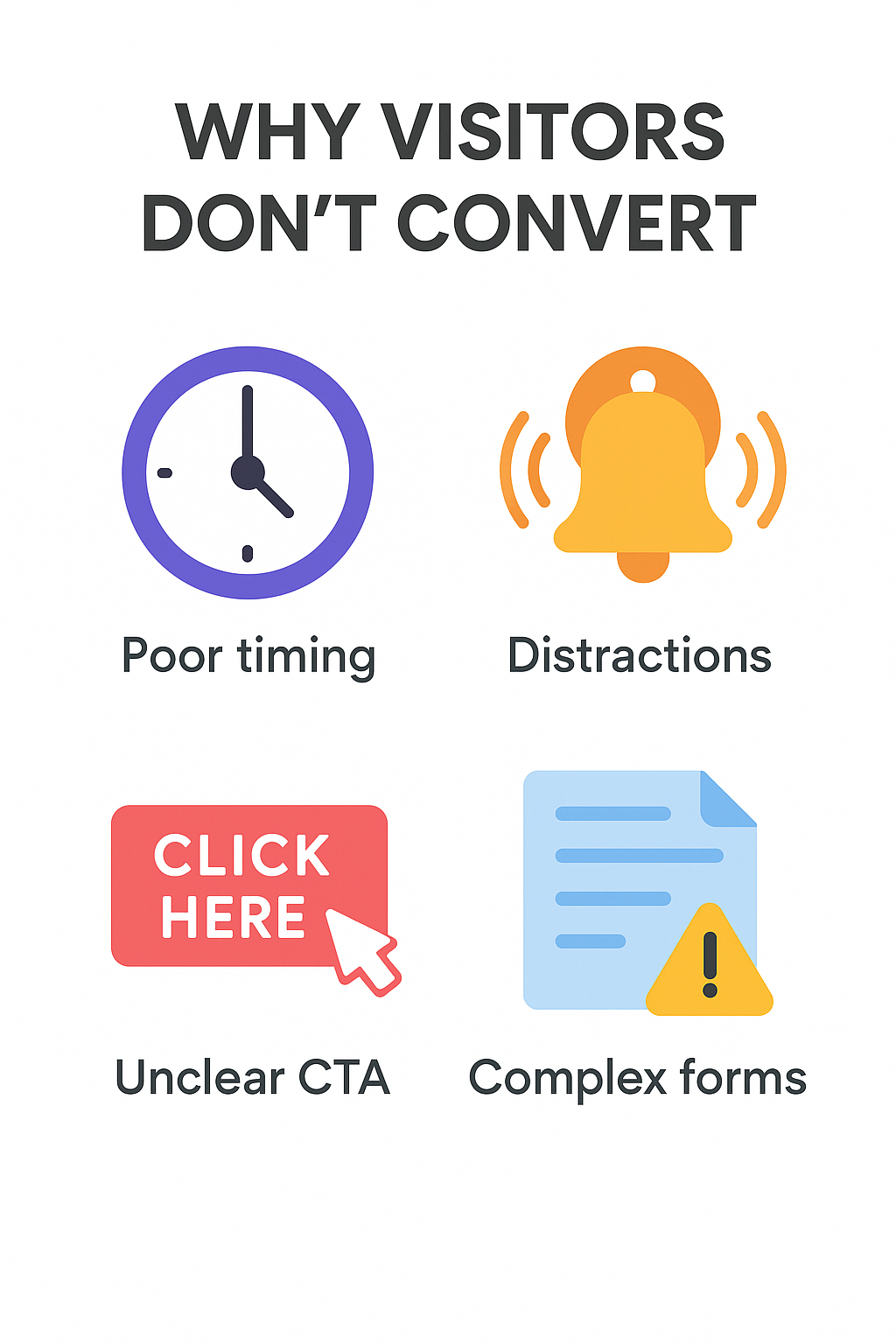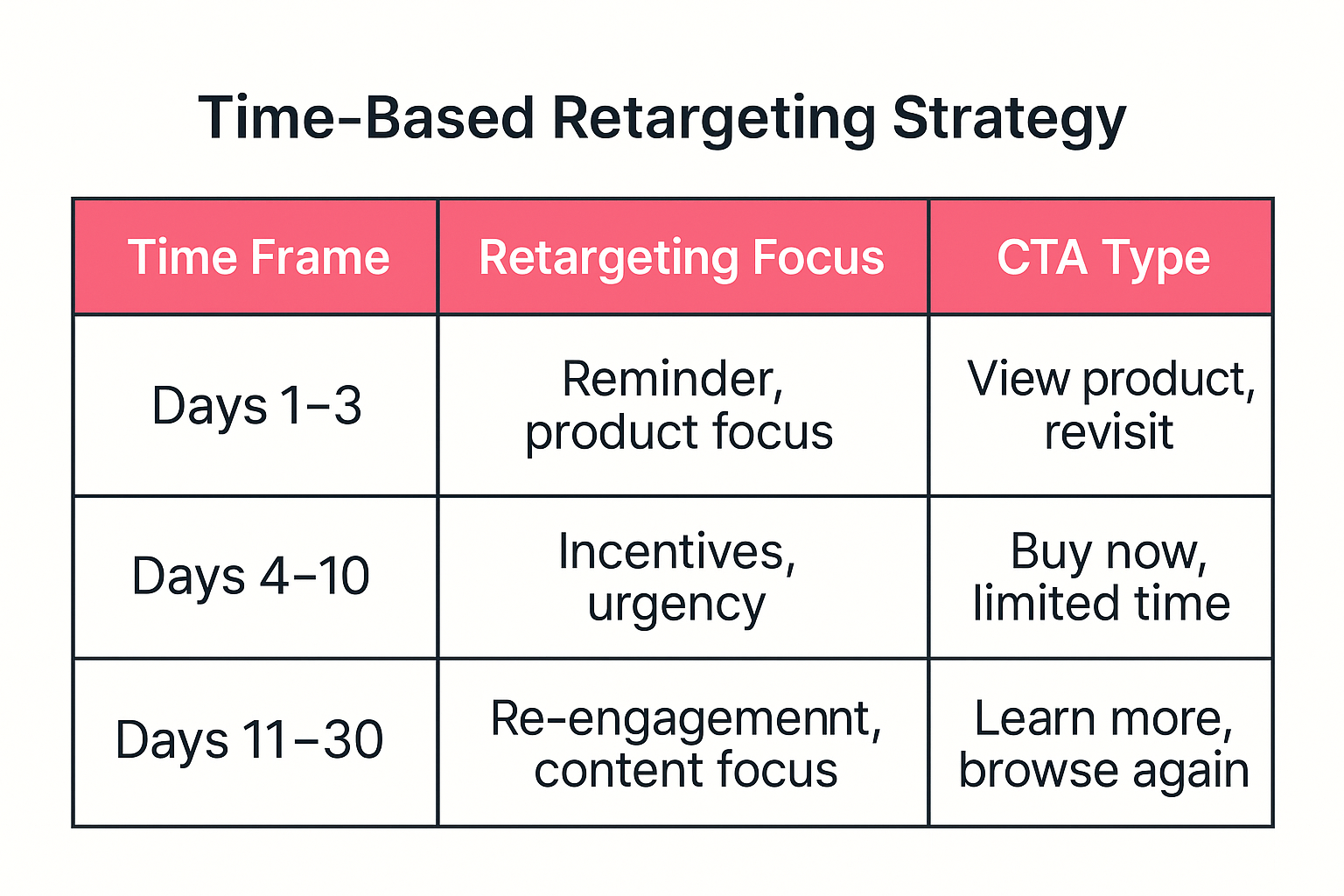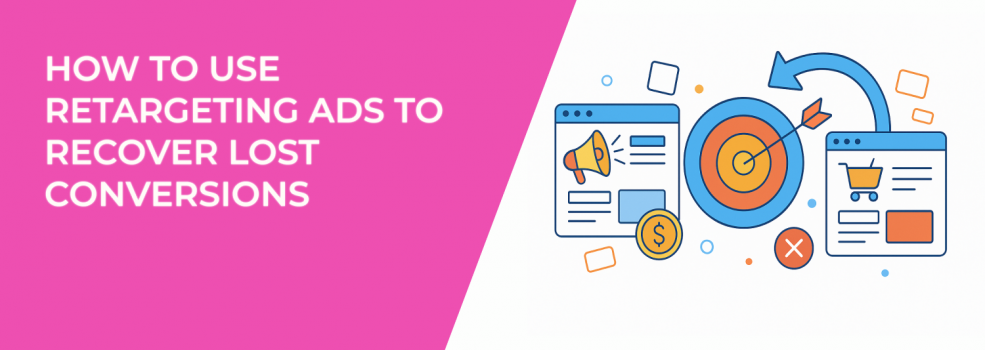You did everything right. The ad was great, the landing page looked sharp, and the offer? Pretty compelling.
But still — the visitor left. What happened?
Well, you're not alone. Most users don’t convert on their first visit. In fact, around 96% of website visitors won’t take immediate action. That’s why retargeting ads give you a second shot.
Let’s break down how to use retargeting ads to recover lost conversions — effectively, strategically, and without wasting your budget.
What Are Retargeting Ads
Retargeting (also known as remarketing) is a form of digital advertising that targets users who’ve previously interacted with your brand — usually by visiting your website or clicking your ad.
Think of it as a gentle reminder:
“Hey, you were interested in this. Still thinking about it?”
Retargeting works because it zeroes in on warm leads — people who already showed interest. And that makes it one of the most efficient tools in your conversion recovery strategy.
If you're new to the concept, start with this guide on how to set up Facebook retargeting.
Why Conversions Are Lost in the First Place
Before fixing the problem, it helps to understand why users drop off.

-
The timing wasn’t right
Maybe they were browsing on a lunch break, in a meeting, or multitasking. Life gets in the way, even if the product is great. -
They got distracted
Notifications, other tabs, or a delivery at the door. Distractions are everywhere online — and users forget to come back. -
They were comparing other options
Many users shop around before making a decision. If they don’t see a compelling reason to buy now, they’ll keep looking. -
Your CTA didn’t hit hard enough
A weak or unclear call-to-action can cause hesitation. If users aren’t sure what the next step is, they’re likely to bounce. -
There were too many steps in the checkout process
Long forms, required account creation, or slow-loading pages? Those are instant deal-breakers for many.
Understanding these drop-off triggers helps you retarget smarter — not just harder.
Build a Smart Retargeting Funnel
Not all site visitors are equal. Someone who added an item to their cart is way more qualified than someone who skimmed a blog post. Retargeting everyone the same way? That’s a missed opportunity.
Here’s how to structure your retargeting funnel strategically:
1. Segment by Intent
Break your audience into buckets based on their behavior:
-
Viewed a product page: These users showed clear interest but didn’t convert. Retarget them with ads showing the exact product they viewed, or suggest similar alternatives.
-
Abandoned cart: This group had high buying intent. A strong incentive like a 10% discount or free shipping can tip the scale.
-
Engaged with blog or content: These visitors are higher-funnel. Retarget them with lead magnets, email signups, or content upgrades to move them closer to a sale.
Want to dive deeper? Here's a step-by-step guide to re-engaging cold audiences using Facebook targeting.
2. Choose the Right Channels
Don’t run your retargeting ads everywhere “just because.” Choose channels based on where your audience is active and what stage of the funnel they’re in.
-
Google Display Network: Good for general awareness retargeting across websites. You can show banner ads to remind users what they left behind.
-
Facebook/Instagram: Ideal for visual product ads, dynamic retargeting, and storytelling through video or carousels. These platforms work well for both B2C and B2B.
-
Native ad platforms: These blend seamlessly into editorial content, which can be more subtle and less salesy — useful for mid-funnel nurturing.
-
LinkedIn: Best for B2B retargeting, especially if you’re retargeting visitors from a case study or pricing page.
Start where your most valuable users are most likely to engage — then expand.
3. Craft Better Ad Creative
Don’t just recycle your cold traffic ads. Retargeting ads need to feel personal and relevant.
-
Testimonials and reviews: These add social proof and can help overcome hesitation, especially for high-ticket products or services.
-
Dynamic product ads: Let users see the exact product they interacted with — personalized ads like these tend to have much higher ROI.
-
Urgency-driven copy: Limited-time offers or “almost gone” inventory notices can push hesitant buyers to act fast.
-
A/B testing: Test everything — image vs video, emotional vs logical messaging, different headlines. Retargeting is still a test-and-learn environment.
Not sure what creative performs best? Start with these proven retargeting tactics for e-commerce success.
Set the Right Frequency (Without Creeping People Out)
No one likes being stalked online.
A user seeing your ad too many times won’t help — it’ll hurt your brand perception and drive up your costs. That’s where frequency capping comes in.
-
3–5 impressions per week per user is a solid benchmark. It keeps you top of mind without overdoing it.
-
Use frequency caps within your ad platform settings to control how often each person sees your ad.
-
Install burn pixels (conversion tracking) to remove converters from the retargeting list. Don’t waste money on people who’ve already bought.
Too much repetition can lead to ad fatigue — which quietly drains your performance. Here's how to use frequency capping to beat it early.
Use Time-Based Retargeting
A one-size-fits-all timeline doesn’t work. Someone who visited your site 2 hours ago isn’t in the same headspace as someone who stopped by 2 weeks ago.

Structure your retargeting based on when the visitor last interacted:
-
Days 1–3: Focus on reminding and reinforcing. Show value and revisit what they were interested in. No pressure — yet.
-
Days 4–10: Now’s the time to introduce urgency. Limited-time offers, fast-shipping guarantees, or price drops work well here.
-
Days 11–30: Try re-engagement strategies. New product drops, related offers, or a softer CTA like “learn more” can bring them back.
By layering your messaging over time, you guide users through the journey instead of bombarding them all at once.
Don’t Ignore Cross-Device Tracking
Today’s buyers are multi-device by default. They might see your ad on their phone, browse on a tablet, and finally convert on a laptop.
If you’re not tracking across devices, your performance data will be misleading.
Make sure:
-
Your Meta Pixel and Google Tags are set up for cross-device attribution.
-
You review view-through conversions and assisted conversions regularly.
-
You’re not undervaluing campaigns just because they didn’t convert on the same device.
This is a common mistake. Many advertisers assume their retargeting isn’t working, when in reality, they’re just missing half the picture. If this sounds familiar, explore why your Facebook ads might not be converting.
Test, Tweak, Repeat
If you set it and forget it — you’ll burn budget fast.
Always be testing:
-
Ad creative (messaging, visuals, CTA).
-
Audience segments (cart abandoners vs product viewers).
-
Placement types (Stories vs Feed, native vs display).
-
Time windows (last 3 days vs last 30 days).
Track:
-
CTR (Click-Through Rate)
-
CVR (Conversion Rate)
-
CPA (Cost per Acquisition)
-
VTC (View-Through Conversions)
Looking to optimize your retargeting vs prospecting strategy? See what works best in this comparison: Retargeting vs. Broad Targeting.
Final Thoughts
Retargeting ads are one of the most powerful tools to recover lost conversions — but only if you’re doing it with precision.
Treat every audience segment differently. Time your message right. Don’t be annoying. And always keep testing.
Because most conversions aren’t lost — they’re just waiting for the right reminder to happen.

